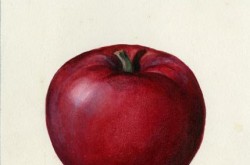Production of Insulin
This article was originally written and submitted as part of a Canada 150 Project, the Innovation Storybook, to crowdsource stories of Canadian innovation with partners across Canada. The content has since been migrated to Ingenium’s Channel, a digital hub featuring curated content related to science, technology and innovation.
This type of bottle was introduced to make insulin widely available to people with diabetes.
This insulin bottle, filled at the University of Toronto’s Connaught Laboratories in the 1930s, represents the transformation of insulin from a promising treatment into a self-administered drug that has improved the lives of people with diabetes the world over. After University of Toronto researchers isolated insulin in 1922, they immediately faced challenges in producing the diabetes-regulating drug, which doctors and patients avidly sought. Frederick Banting, James Macleod, Charles Best, and James Collip found it difficult to produce insulin in sufficient quantities, and of consistent potency, at the Connaught Laboratories.
The university established a partnership with American pharmaceutical company Eli Lilly and Company in 1922. In exchange for production and distribution rights, Eli Lilly promised to resolve production issues associated with the drug, and the resulting shortages. Lilly researchers discovered a method in 1923 that created insulin in a purer, more concentrated form. This process allowed Lilly to manufacture insulin in unlimited quantities. The University of Toronto, which owned the insulin patent, earned millions in royalties that were directed into medical research.
Large-scale production also established both Connaught Laboratories and Eli Lilly as early leaders in an emerging global pharmaceutical industry. The University of Toronto sold Connaught Laboratories in 1972. Originally known as the Antitoxin Laboratories, the institution was established in 1914 and produced smallpox, rabies, and diphtheria vaccines.


























